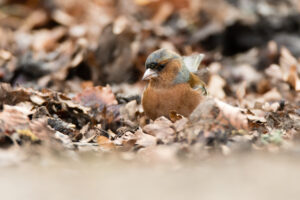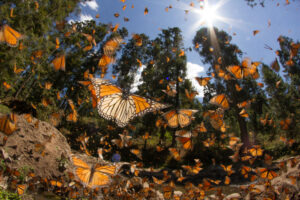July 20, 2022
Water is an essential part of obtaining a healthy, lush lawn, and it is also a limited resource. According to the EPA, experts estimate that 50 percent of the water we use outdoors goes to waste from evaporation, wind, or runoff due to overwatering. Here we will explore watering tips to save water like what time to water or how long to water and conservation tips to water more efficiently.
Watering Tips
What Time to Water
To prevent wasteful evaporation and lawn diseases, it is best to water early in the mornings, before 10:00 am. In the mornings, the sun isn’t as hot, so the water can soak into the soil and reach the root system of the grass. If you water during peak sun hours, like between 10:00 am and 6:00 pm, you’ll risk losing much of the water to wind and evaporation before it can be absorbed into the soil. Similarly, if you water late into the night, the grass stays wet and risks fungus and other disease growth.
To help with early morning watering, a water timer can do the watering for you. Set your sprinklers in place the night before so you can sleep in or enjoy a cup of coffee. Program your water timer to automatically water your lawn and garden at the right time and give yourself back your mornings.
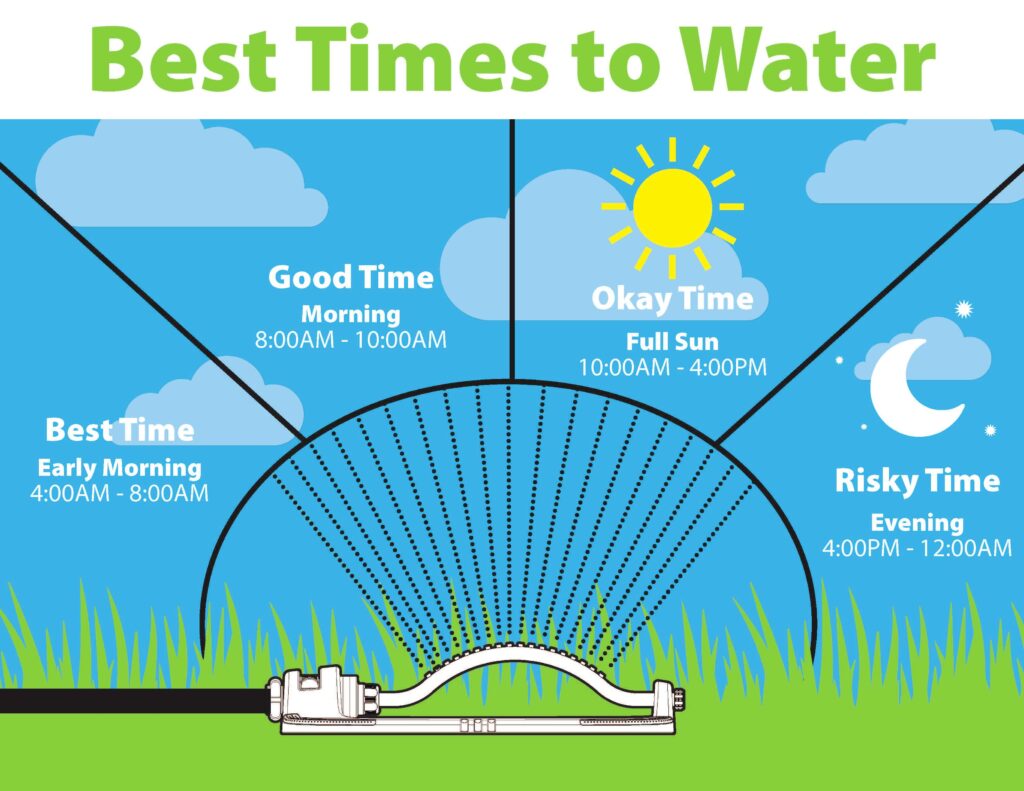
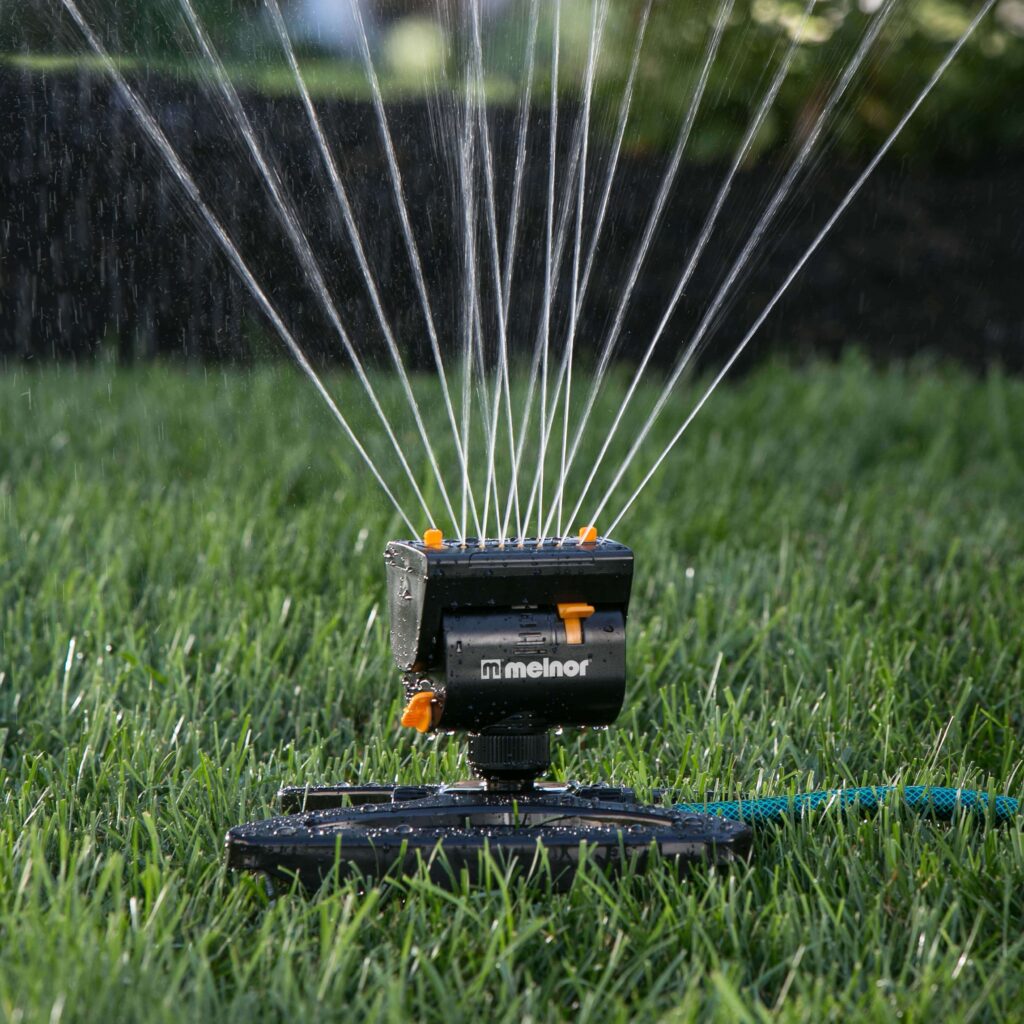
How Long to Water
Most lawns need about 1 – 1 ½ inches of water per week from rain or a watering tool. Depending on how big your lawn is, what type of grass you have, and what kind of sprinkler you’re using, exactly how long to water will vary. Read our Lawn Watering Guide for more information on watering diverse types of grass and measuring your sprinkler output.
A soil moisture sensor is a safe way to help prevent overwatering. The Melnor Hydrologic Soil Moisture Sensor monitors how wet the soil is to automatically skip watering when it rains, or the soil is too damp.
How Often to Water
How often you water will depend on grass type, climate, and region. Generally, you’ll want to focus more on deep, infrequent watering of your lawn to promote deep root growth. Grasses with deep roots can search for water further down in the soil, allowing you to water less often. This also makes your lawn able to withstand changing weather and diseases.
Lawns need to be watered more frequently during hot summer months and less frequently during the spring and fall. According to the Water Use it Wisely Campaign, plants can use 3 to 5 times as much water during the hot, dry summer as they do during the winter. Remember to change your watering schedule accordingly.
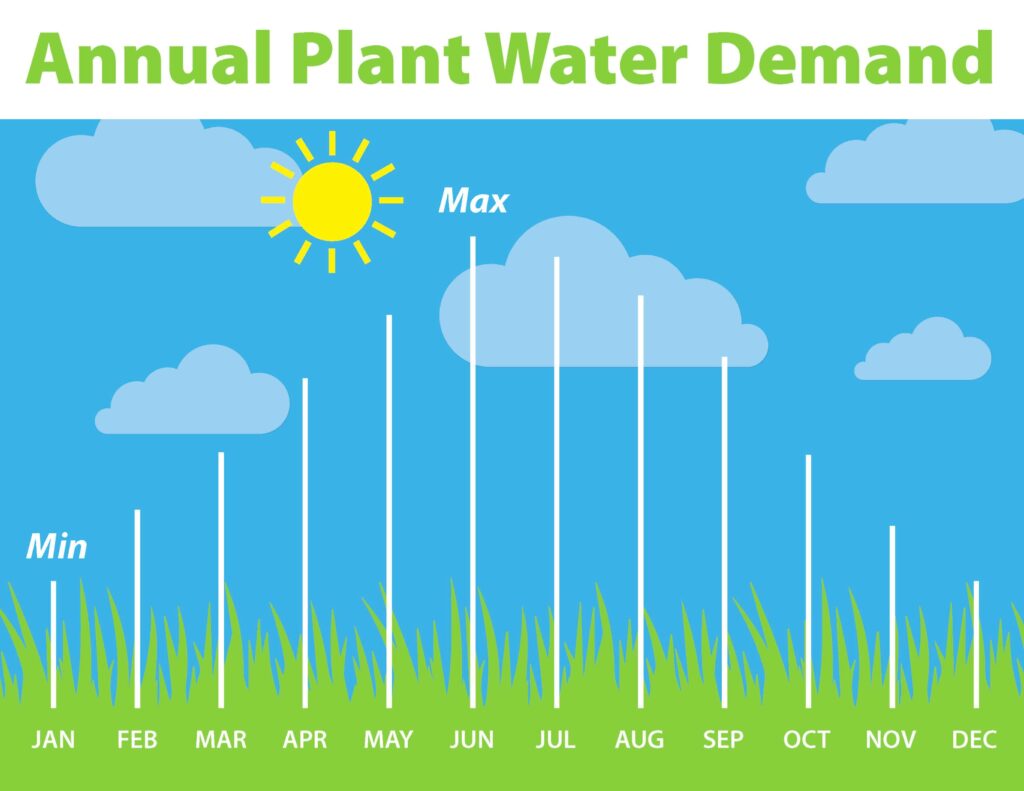
In between watering’s, watch for signs of dryness like:
- Step test: If the footprints you’ve left behind don’t bounce back to form, the grass blades lack the moisture they need to bounce back.
- Color changes: If you see brown spots, it’s an obvious sign of dryness, but if you see slight color changes to a dull gray, blue, or purple tint, that can be a sign of under-watering.
- Curly blades: If you notice your grass blades curled or withering, your grass is not hydrated, and it’s time to water.
- Tough soil: If it is hard to push a spike sprinkler or screwdriver into the ground, your lawn may be underwatered.
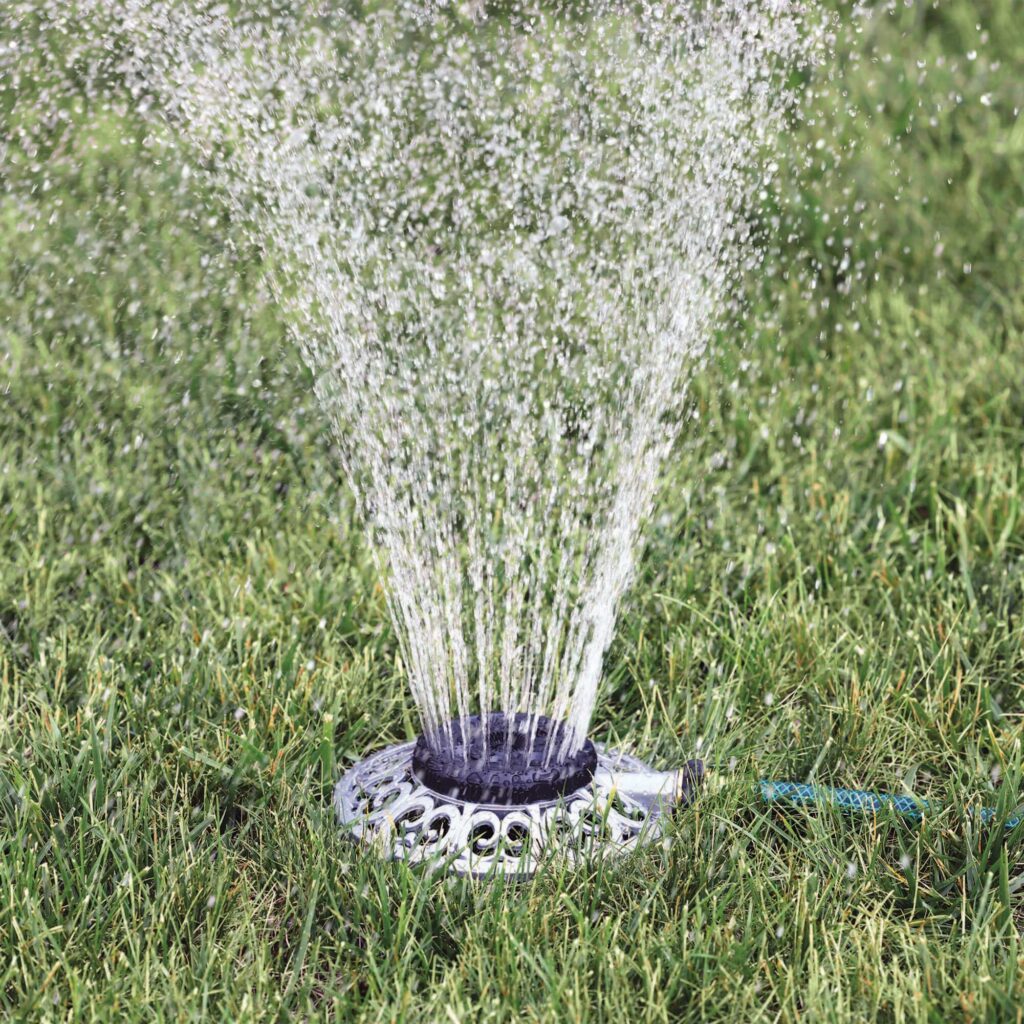
Conservation Tips
What Sprinkler to Choose
Different sprinklers cover different areas. An oscillating or spot sprinkler may provide enough cover-age if you’re looking to cover a small space. If you’re aiming to water the whole yard, a pulsating sprinkler or a set of sprinklers in a series may give you the most distance. One thing is true of whatever sprinkler you choose; they’ll need to be cleaned periodically to last longer. Check out our Sprinkler Cleaning and Maintenance Guide for steps on cleaning your sprinkler and perfecting your watering.
Types of Sprinklers:
- Soaker Hoses: Weave the soaker hose around the base of your plants to slowly soak only the areas you need. Easily set the hose along a row of tomatoes in the vegetable garden or place the hose in a circle around the base of your maple tree. They’re great for delivering a long, deep soak right to the root of the plants.
- Watering Wands: A watering wand is perfect for reaching the plants at the back of your garden. Place the wand under the plant’s foliage to reach the base of the plant and get water directly to the root system. This will keep water from pooling on the leaves and evaporating before it can reach the roots.
- Spot Sprinklers: Spot sprinklers are great for targeting troublesome dry spots on your lawn or reaching a small area in your flower bed. The soft water flow is gentle for delicate flowers and new seedlings. Spot sprinklers use less water than oscillating or pulsating sprinklers and are easier to move around the yard.
- Multi-Adjustable Sprinklers: The Melnor Multi-Adjustable Spike Sprinklers provide amazing flexibility in one small device. Quickly arrange the placement and coverage of each sprinkler for precision watering to reduce waste. Adjust the angle, direction, and range of the water spray to pinpoint the coverage, watering right where you need it.
- Oscillating Sprinklers: As the name suggests, oscillating sprinklers have metal or plastic tubes that oscillate back and forth. Oscillating sprinklers are typically used for medium to large-sized gardens or lawns because they cover a bigger rectangular area. Because of the gentle, even coverage, oscillating sprinklers can be used on newly seeded areas or well-established grass. Most oscillating sprinklers offer range adjustments to reduce wasteful overspray.
- Turbo Rotary Sprinklers: Turbo drive rotary sprinklers are ideal for discreet watering. The nearly silent operation won’t disturb the neighbors so that you can water early in the morning and prevent evaporation from the afternoon sun. Adjust the spray angle from a full to partial circle to water where needed.
- Pulsating Sprinklers: Pulsating sprinklers, sometimes called impact sprinklers, are great for watering large areas. The chk, chk, chk sound of pulsating sprinklers is known as the sound of summer. You can find pulsating sprinklers on various bases like a sled, spike, or wheeled base. While not as precise as an oscillating sprinkler, most pulsating sprinklers have coverage angle, spray distance, and water diffusion adjustments to cover the areas most important to you.
- Traveling Sprinklers: A traveling sprinkler is a perfect solution for extra-large areas. The self-propelled sprinkler follows a path you create using your existing garden hose and automatically shuts off when finished. Traveling sprinklers offer extra convenience and cover a large range.
Things to Think About Before Buying a Sprinkler
- Lawn size: The size of your watering area will be a significant factor in determining what type of sprinkler to use. Use our lawn size calculator to find the right sprinkler to water your lawn, not the driveway. Pick a sprinkler for your small front garden and find one that will work best for your large backyard.
- Adjustability: Most oscillating sprinklers have multiple adjustments to fine-tune the watering area, such as range, width, and flow. If you’re looking for full control of where you’re watering, an oscillating sprinkler may be best. A spot sprinkler may do the trick if you’re looking for something you don’t have to adjust.
- Coverage: Similar to lawn size, what type of area are you trying to cover? If your back-yard is a more square or rectangular shape under 4,500 sq. ft., oscillating sprinklers are tailored perfectly for that. But, if you could fit a naval ship in your yard, then a pulsating sprinkler may provide better coverage.
- What you’re watering: If your goal is to wet a newly seeded area, the gentle spray of an oscillating sprinkler will keep the seeds in place while delivering even coverage. If your grass is well-established, a pulsating sprinkler will offer great coverage. If you’re trying to water a single dry spot in the yard or the base of a tomato plant, a soaker hose or spot sprinkler may be best.
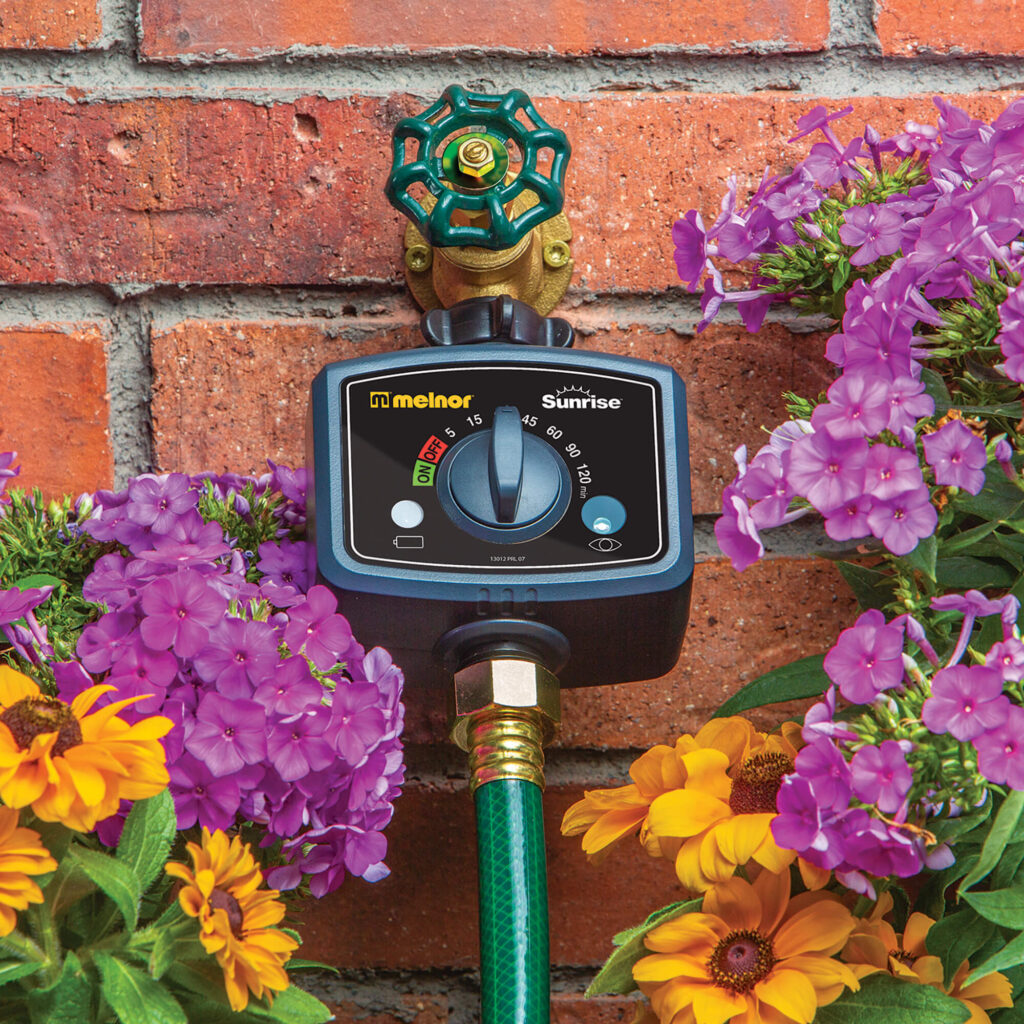
How to Conserve Water While Growing a Lush Lawn
While we’re all after a lush, green lawn and flourishing flowers, our water bill is after our wallets. Consider these things when setting up your watering plan to conserve water and save money.
- Set a schedule: Use a water timer to automatically water on specific days of the week, depending on your plants’ needs. Adjust the program based on the weather. Lawns need more water during the scorching summer compared to the spring and fall. With a 2-zone or 4-zone water timer, you can set up different zones for different parts of your yard. Each zone can have its own schedule, so you can water your tomatoes every morning and your lawn every other day. Split your zones between the sun and shaded areas of your lawn to avoid over or under watering.
- Water at the right time of day: See above where we discuss the best time to water and the risks of watering at the wrong time. Watering before 10:00 am gives the water time to soak into the soil before the hot sun causes evaporation. This means you can use less water while getting a healthy lawn.
- Use a moisture sensor: A soil moisture sensor such as Melnor’s HydroLogic® Soil Moisture Sensor monitors how wet the soil is to skip watering automatically when it rains or the soil is too damp. This will help ensure you don’t overwater the lawn or run the sprinkler after a downpour.
- Sprinkler maintenance: Read our sprinkler maintenance guide for tips on cleaning your sprinklers and fixing common issues. Clogged sprinkler nozzles, leaking sprinkler heads, and minor leaks can add up in a big way. According to the EPA, “just one broken sprinkler head could waste up to 25,000 gallons of water and $90+ over a 6-month irrigation season.”
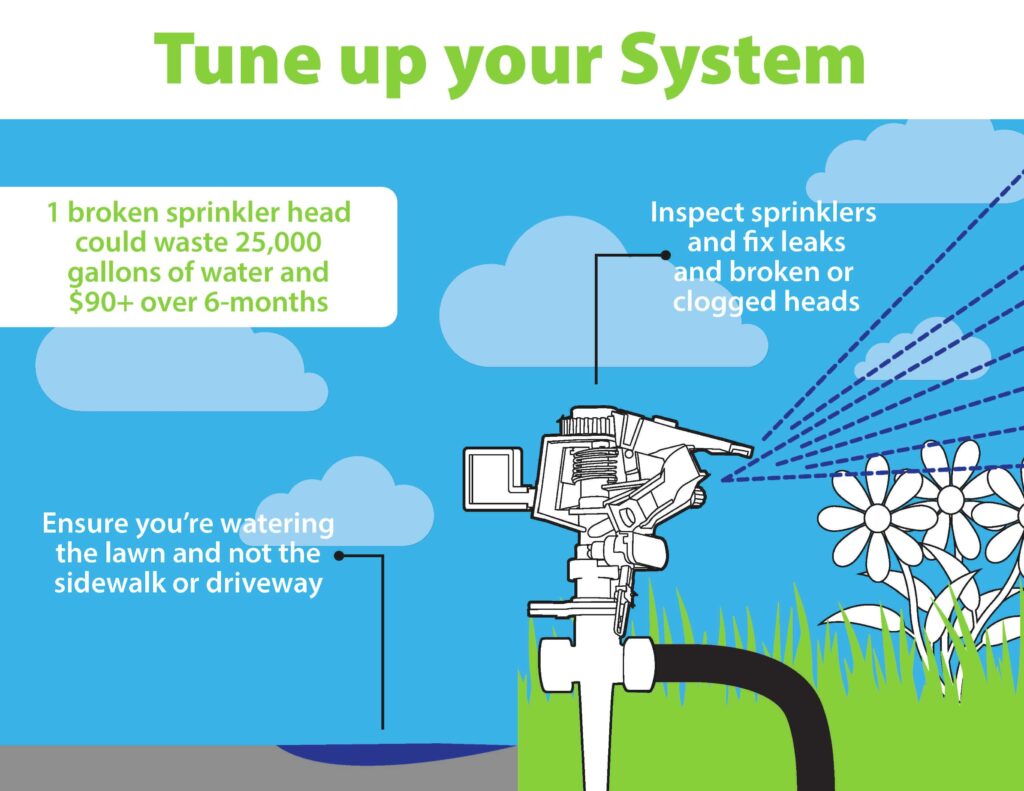
- Learn your sprinkler adjustments: Whichever type of sprinkler you choose, take the time to adjust the sprinkler’s spray pattern to cover just the area you need. Melnor’s XT oscillating sprinklers have up to three dimensions of adjustability to control the sprinkler’s width, range, and flow. Melnor’s pulsating sprinklers offer adjustments to the coverage angle, spray distance, and water diffusion to cover the areas most important to you. Keeping the water off the sidewalk will stop unnecessary water runoff by reducing water waste.
- Regulate water pressure: Too high-water pressure can create a mist from your sprinklers that won’t water where it’s meant to. Install a pressure gauge to help regulate water pressure.
- Improve soil and lawn quality: A healthy lawn and nutrient-dense soil mean your plants and grass will develop a strong root system. Deep roots are better at seeking water deep into the soil. This means they will require less watering. Lawns with a shallow root system only seek water from the top few inches of soil. Water in that area of the soil will evaporate more quickly, causing you to have to water more often. Healthy lawn maintenance is the key to a healthy root system.
- Consistent mowing: Mowing creates a stressful event for the grass, causing it to respond by growing deeper roots and more leaves. Consistent mowing helps develop a deeper root system for a healthier lawn. Be sure to mow at the proper height, being careful not to scalp the lawn. Taller grass can keep the soil shaded, causing less evaporation.
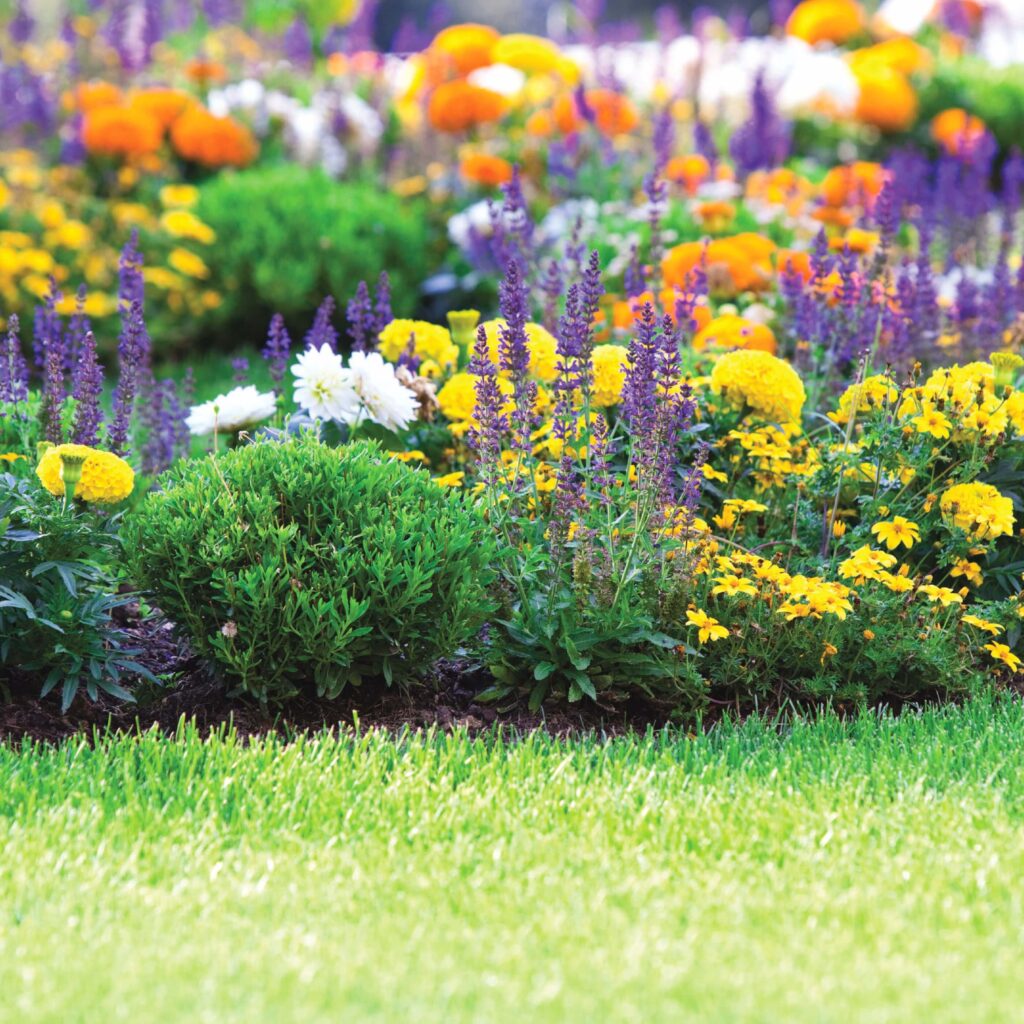
How to Choose the Right Plants and Grasses to Save Water
Choosing plants and grasses native to your region will save you time and water by requiring less maintenance and less irrigation. According to the National Wildlife Federation, a plant is considered native if it has occurred naturally in a particular region, ecosystem, or habitat without human introduction. Native plants also help avoid rainwa-ter runoff by filtering it down into their deep-root system and back into aquifers.
Your local county extension office and local native plant nurseries are excellent sources of information and ideas about native plants for your area. The University of Texas at Austin Lady Bird Johnson Wildflower Center hosts the Native Plants of North America plant list, the most comprehensive guide to North American native plants in existence, with an accessible and searchable database of information about more than 9,000 native plants, 50,000 plant images, answers to plant and natural gardening questions, and more. Gardening with native plants will help conserve water and provide food and shelter for native birds and animals.



